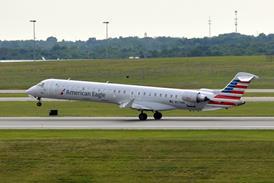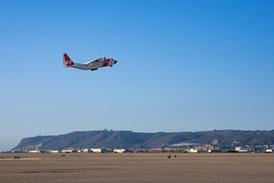Don't panic! Despite a high-profile cancelled order and falling yields, the US passenger airline market is not yet in crisis
One of the first alarm bells of an economy in genuine decline is that businesses stop sending goods around. How busy trucking firms and air freight carriers are, and whether they are updating their fleets, is a fairly accurate barometer of industry's real state. It often comes months after confidence ebbs from the stock market, which in some ways represents the "virtual economy".
That's why FedEx Express's decision to cut back on its MD-10 conversion programme and defer orders for Airbus A300s and Boeing MD-11s is a worrying sign that the Federal Reserve's attempts to wrench the ailing US economy back on track are failing - despite some encouraging economic indicators last week.
The concern now must be that passenger airlines will be next. When the "dot bomb" exploded late last year, high-flying executives and internet entrepreneurs found themselves rapidly downgraded from executive jets and first class to business, and their middle managers from business to economy. In the first six months of this year US business jet sales have slumped 30% and airlines have been forced to discount heavily to fill empty seats in their premium cabins.
America's big five airlines are certainly feeling the pinch. Northwest last week told employees that job cuts could be on the cards despite reducing costs by $200m already. American Airlines, currently digesting TWA, warned investors they may have to swallow a loss this year.
But so far the wobbles in the US economy have not impacted significantly on new passenger aircraft deliveries. There are three reasons for this. Firstly, airlines have had to face up to revamping ageing fleets as tougher environmental laws threaten to make older models obsolete; both United Airlines and Delta Air Lines have just announced plans to cut capacity by retiring aircraft. Secondly, most airlines seem prepared to ride out this slump - which, do not forget, is barely six months old - staking their hopes on the economy reviving in time for their acquisitions to come on-stream. And, thirdly, the burgeoning regional jet market - the result of an increasingly prosperous and mobile population - has kept aircraft plants at full tilt.
However, this is where things get doubly-worrying. Just at a time when passengers are getting scarcer, pay expectations by pilots threaten to shatter the fragile arithmetic on which the regional airline marketplace is based. Comair's truce with its striking pilots may have got its 26services from Cincinnati back in the air, but it has left the relationship between unions very much up in the air. A round of pay negotiations between regional airlines and their pilots' representatives will now have the Comair deal driving the agenda. It is likely to lead to major airlines thinking twice about relying on regional partners to provide feeder services between hubs and some of the less significant destinations on their network.
For the wider prognosis on the US airline market, though, you do have to look beyond the industry to the economy as a whole and, indeed, to the longer term. And there the outlook is better. The latest quarter point cut in interest rates may not have been the leg-up many were hoping for, but it means interest rates, at 3.75%, are 2.75% lower than they were in January. Although businesses in the technology sector in particular have been laying off staff, consumer confidence is holding up. And limited infrastructure and air space, rather than economic conditions, appear to be the main brakes on continuing upward demand for air travel in the USA over the next decade.
If the aircraft manufacturers are panicking about the future, they are hiding it well. At the Paris air show Airbus reinforced its orderbook with 175 more aircraft and Boeing's market forecast too was fairly bullish. The airlines, concerned about delivering quarterly good news on passenger yields to their shareholders, may be nervous, but longer-term, the US airline market is in good health.
Source: Flight International























